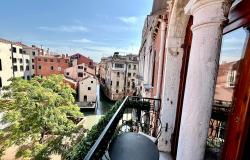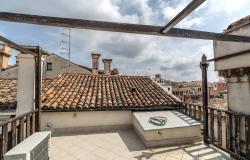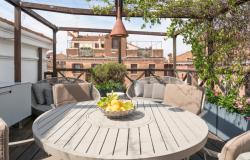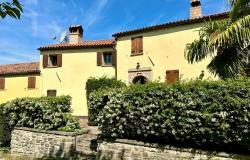A right-wing councillor this week accused Venice city council of ''thoughtlessness'' over a new high-tech bridge on the Grand Canal due to open next month.
Raffaele Speranzon, National Alliance whip in the lagoon city's council, said the cost of the project had spiralled out of control due to planning errors, while there would be no disabled access to the bridge when it opens.
''When the bridge was first planned in 1996, it was to have cost four million euros. So far, the city has spent 12.5 million euros, but legal disputes with the construction company over planning errors could cost a further 11 million,'' he said.
''All these errors were born from the thoughtlessness with which the council has managed the project - thoughtlessness that is quite evident from the fact that the bridge, when it is inaugurated, will not be accessible to the disabled and is therefore outside the law,'' he added.
But the city's public works chief, Mara Rumiz, dismissed Speranzon's claims.
''The bridge has cost around 10 million euros,'' she said. ''Speranzon's figures have no basis in reality because one can't include (possible legal pay-outs). There will be a litigation and then we'll see,'' she said.
''The bridge is all but finished and will be ready in a month, but it will take a couple of months to install the automatic lift for those who have mobility problems,'' she added.
Once opened, the bridge will link Venice's railway station with Piazzale Roma, a car, bus and ferry terminal on the opposite side of the Grand Canal.
Designed by Spanish architect Santiago Calatrava, the sleek arc of steel accessed by a flight of glass steps spans 94 metres from one bank to the other.
The bridge will be the fourth over the lagoon city's Grand Canal and the city's first new bridge in 70 years.
But the project has been dogged by controversy and delays from the start, which have put back the planned inauguration date of June 2005.
The bridge was installed two years late last summer amid fears that the canal banks wouldn't be able to hold it up properly.
Speranzon said a ''mistake'' had also been made over the choice of steel used for the bridge, which meant ''20 tonnes had to be chucked away''.
In February Mayor Massimo Cacciari had to dismiss fears that the bridge might be shaky after a local newspaper quoted project chief Roberto Casarin as saying it had moved ''about a centimetre'' in a load-bearing trial.
Other alterations to the original plan included the decision to add stairs, in order to make the structure more visible to tourists, and to use two kinds of stone instead of one.
Calatrava's other trademark buildings include the 2004 Athens Olympic stadium, an auditorium and sealife centre in his native Valencia, and the Milwaukee Museum of Fine Arts.
Fuss over new Venice bridge

Topic: Architecture
Location
You may also be interested in...
Latest property in Veneto
90 m²
3 Bedrooms
545000
360 m²
5 Bedrooms
2000000
230 m²
4 Bedrooms
2490000
130 m²
3 Bedrooms
590000
300 m²
5 Bedrooms
980000
166 m²
2 Bedrooms
260000








